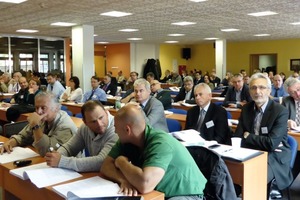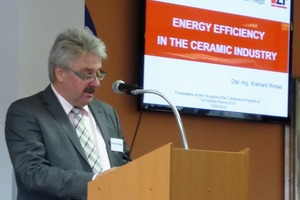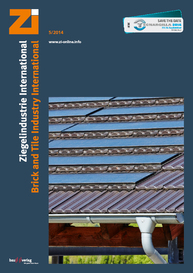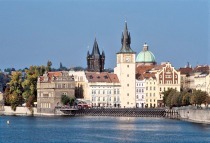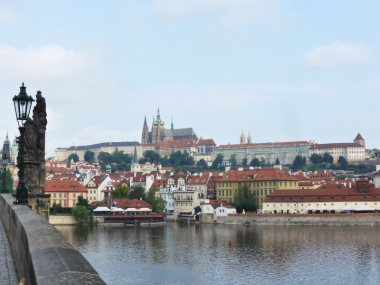Refra & Hitherm Prague 2014 with broad range of topics
While the June 2013 event had to be cancelled due to catastrophic flooding in Prague, the 2014 proceedings took place with the Czech capital city in full bloom. At the reception, the organizers presented a collection of photos showing how severe the damage actually was – including inundation of the Refra & Hitherm venue on the banks of the Vitava River.
In his kickoff presentation at the joint opening session, refractories consultant Charles E. Semler informed his audience that „The advancement of refractories technology never stops“. He described the situation of the global refractories industry, rapid growth in China and current trends within the branch. In the period of time between 2000 and 2012, annual steel production grew by 79% around the world, while China‘s output alone expanded by 463%! That, of course, was accompanied by greater demand for refractory products.
Eckhard Rimpel, Brick and Tile Research Institute Essen Regd, reported on “Energy efficiency in the ceramic industry“. He surveyed the available options for reducing energy consumption, e.g., by use of circulators, recycling of off-heat from dryers, etc.
Tomáš Rousek, Confederation of Industry of the Czech Republic, presented Europe‘s climate goals along with a rundown of the Czech Republic‘s own data.
“Czech and Slovak refractories in the background of the global refractory materials industry“ was the topic of a report by Tadeáš Franek, Refrasil, who illuminated the link between expanding global steel production and worldwide growth in the production of refractory materials. Specifically, however, the production of lower-quality refractories is declining, while that of high-quality ceramics is on the rise.
Friedrich Raether, Fraunhofer Institute for Silicate Research ISC, discussed „Thermo-optical characterization at high temperatures – state of art and future prospects“, explaining the various apparatus and measuring instruments, along with their respective application potentials.
David Pearmain, Lucideon, elucidated the capabilities of “Field enhanced sintering for whiteware ceramics“. Since sintering counts among the most energy intensive processes in the field of conventional ceramic production, the possibility of sintering in an electric field at comparatively low temperatures opens up new possibilities for saving energy.
After the joint opening session, the 100-plus participants were able to gather information on their own pet topics at either of the two parallel international conferences. The Refra presentations concentrated mainly on shaped and unshaped refractories, new materials and applications, insulating materials, corrosion of refractory linings and environmental challenges. That conference was continued on May 14. Hitherm, for its part, was more occupied with such topics as high-temperature processes, heating systems, kiln and burner technology, energy efficiency and heat recovery in high-temperature technology, materials for high-temperature technologies, and control/measuring equipment.
⇥Anett Fischer

